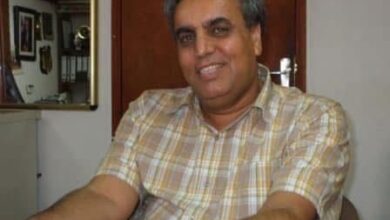الرئيسيةثقافه وفكر حر
حتى تتوصل بنفسك الي وحدانية الخالق وفرديته، إجلس مع نفسك واسألها واجعلها هي التي تجيبك من انت؟
الشاعر وحيد راغب

تقول أنا نتيجة التقاء حيوان منوي الذكر ببويضة الأنثى بالتزاوج. أي أنت مخلوقة
ستجيب بنعم
من خلقك؟
ستتردد وتقول إما الطبيعة إما هناك خالق
الطبيعة عاقلة أم غير عاقلة؟
تجيبك ليست عاقلة
أمن المنطق أن يخلق الغير عاقل العاقل
تجيبك لا
إذن لو انتفت الطبيعة لم يوجد إلا خالق عاقل
وليس من البديهي أن يكون الخالق له خالق وتظل السلسلة الي مالا نهاية
فالخالق هو الأول والآخر يخلِق ولا يخلَق
فما الروح التي اذا دخلت الجسد تحرك بالحياة؟
هي شيء غير مدرك ولا معروف كالشفرة
إذن هي سر ولو عرفه غير واحد ما سار الخلق على وتيرة واحدة، لتعدد الخالقين
ولو عرفه الإنسان لأبعد عنه الموت بأن تظل الروح في الجسد
لماذا الموت؟
هو سنة في الكون لإثبات تجدد الحياة، فلو فرض أنه لا موت، فهذا يعني أنه لن يوجد إلا الجيل الأول من الخلق، بل يكون صنو الألهة
هل الموت نهاية لا بعدها؟
يقول الدهريون بذلك ومن ينكرون ما بعد الموت، ولكن هذا غير منطقي لأنه لو كان الموت نهاية ولا بعث ولا حساب، إذن الفوضي والتسيب والشهوانية وسفك الدماء كلها أشياء تعني لا قيمة للحياة
فالموت الدنيوي مرحلة لحياة أخرى تسمى البرزخ أي حياة بين حياتين، الحياة الدنيا والحياة الآخرة أي بعد البعث من القبور للحساب والعقاب،
فنحن نرى في الدنيا لو لم يوجد حساب ثواب وعقاب لصارت الدنيا غابية غريزية لا قيمة فيها للأخلاق والفضائل.
وما فائدة المحسن بإحسانه اذا لم يثاب عليه، وما الرادع للمسيء اذا لم ينتظر العقاب
عندها ستهدأ نفسك وتستقيم على الحق والفطرة السليمة.
الشاعر وحيد راغب


